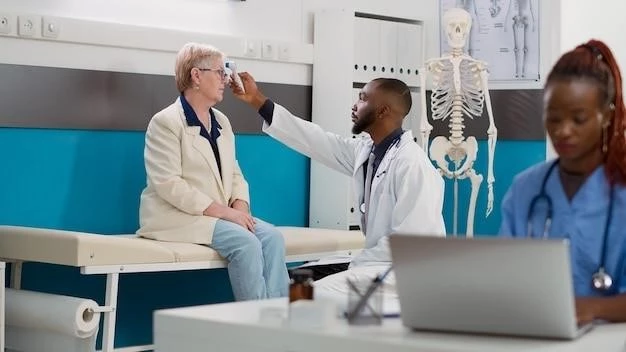Introduction
The Oculopalatoskeletal Syndrome‚ also known as 3MC Syndrome‚ is a rare genetic disorder characterized by distinctive facial features and skeletal abnormalities.
Overview of Oculopalatoskeletal Syndrome
The Oculopalatoskeletal Syndrome‚ also referred to as 3MC Syndrome‚ is a rare genetic disorder characterized by distinct facial features such as hypertelorism and craniosynostosis‚ along with skeletal anomalies like cranial asymmetry and radioulnar synostosis. Individuals with this syndrome may also exhibit cleft lip and palate‚ hearing loss‚ and mild cognitive impairment. Despite its rarity‚ ongoing research aims to enhance understanding and improve diagnostic and treatment approaches for individuals affected by this complex syndrome.

Clinical Features
The clinical presentation of Oculopalatoskeletal Syndrome includes distinctive facial features‚ skeletal abnormalities‚ cleft lip and palate‚ hearing loss‚ and cognitive impairments.
Distinctive Facial Features
Oculopalatoskeletal Syndrome presents a unique set of facial characteristics including hypertelorism‚ craniosynostosis‚ cleft lip and palate‚ blepharophimosis‚ blepharoptosis‚ highly arched eyebrows‚ and cranial asymmetry among others.
Genetic Associations
Oculopalatoskeletal Syndrome‚ also known as 3MC Syndrome‚ is associated with the MASP1 gene‚ contributing to the unique features and complexities of the disorder.
Gene Associated with Oculopalatoskeletal Syndrome
The MASP1 (MBL Associated Serine Protease 1) gene is closely related to Oculopalatoskeletal Syndrome‚ playing a crucial role in the pathogenesis and unique characteristics of this genetic disorder. Research suggests that mutations in the MASP1 gene are linked to the development of 3MC Syndrome‚ contributing to the complex array of symptoms seen in affected individuals.
Diagnosis and Treatment
Diagnosis of Oculopalatoskeletal Syndrome involves genetic testing and clinical evaluation. Treatment focuses on symptom management and supportive care tailored to individual needs.
Diagnostic Criteria for Oculopalatoskeletal Syndrome
Diagnosis of Oculopalatoskeletal Syndrome is based on the presence of blepharophimosis‚ blepharoptosis‚ highly arched eyebrows‚ hypertelorism‚ cleft lip and palate‚ postnatal growth deficiency‚ cognitive impairment‚ hearing loss‚ radioulnar synostosis‚ and cranial asymmetry. Genetic testing plays a key role in confirming the MASP1 gene mutation associated with this rare disorder.

Research and Case Studies
Oculopalatoskeletal Syndrome‚ also known as 3MC Syndrome‚ continues to be a focus of research and case studies to enhance understanding of the disease’s complexities and improve diagnostic and treatment approaches.
Recent Findings on Oculopalatoskeletal Syndrome
Recent research on Oculopalatoskeletal Syndrome has focused on genetic mutations‚ particularly in the MASP1 gene‚ contributing to the distinctive facial features and skeletal abnormalities associated with this rare genetic disorder. Understanding these genetic associations is crucial for accurate diagnosis and potential targeted treatments for affected individuals.
Oculopalatoskeletal Syndrome‚ characterized by unique facial and skeletal features‚ continues to be a focus of research‚ aiming to advance diagnostic methods and treatment strategies for affected individuals.
Future Perspectives on Oculopalatoskeletal Syndrome
Continued research on Oculopalatoskeletal Syndrome holds promise in unraveling further genetic complexities‚ potentially leading to targeted therapies and improving the quality of life for individuals affected by this rare disorder. Future studies may focus on identifying additional genetic factors influencing the variable expressivity and severity of the syndrome.
